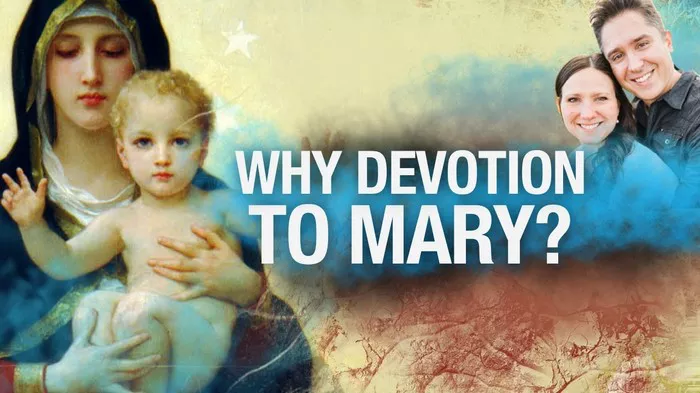Prayer is a fundamental aspect of religious practice for many Christians around the world. While prayer to God is central, there exists a rich tradition of devotion to various saints and figures within Christianity. Among these figures, the Blessed Virgin Mary holds a unique and revered position. In Catholic and Orthodox traditions, praying to Mary is not only commonplace but deeply meaningful. This article delves into the theological, historical, and practical reasons behind the practice of praying to Mary.
Understanding Mary in Christian Theology
Mary, the mother of Jesus, occupies a central place in Christian theology. According to Christian belief, Mary was chosen by God to bear the Son of God, Jesus Christ, through the miraculous conception known as the Virgin Birth. This event is foundational to Christian faith and is recounted in the Gospels of Matthew and Luke.
Mary’s role in the Incarnation, her unwavering faith, and her willingness to cooperate with God’s plan make her a figure of immense significance within Christianity. She is often referred to as the Theotokos, a Greek term meaning “God-bearer,” emphasizing her role as the mother of Jesus, who is both fully human and fully divine.
Intercessory Prayer and the Communion of Saints
One of the primary reasons for praying to Mary is the belief in the communion of saints within Christianity. The communion of saints refers to the spiritual connection and solidarity among all believers, both living and deceased. This concept is based on passages in the New Testament, such as Hebrews 12:1, which speaks of a “great cloud of witnesses” surrounding believers.
In Catholic and Orthodox theology, the saints, including Mary, are seen as powerful intercessors who can pray on behalf of individuals before God. Just as one might ask a friend or family member to pray for them, believers turn to Mary and other saints to intercede for them in matters of health, protection, guidance, and spiritual growth.
Mary as a Model of Faith and Virtue
Beyond her role as an intercessor, Mary serves as a model of faith and virtue for Christians. Throughout the Gospels, Mary is portrayed as a woman of profound faith, humility, and obedience to God’s will. Her famous response to the angel Gabriel, “Let it be done to me according to your word” (Luke 1:38), exemplifies her complete surrender to God’s plan.
For believers, Mary’s life serves as an inspiration and example of discipleship. By emulating her virtues and seeking her guidance through prayer, Christians strive to deepen their relationship with God and live more faithfully according to His teachings.
The Tradition of Marian Devotion
The practice of praying to Mary has deep roots in Christian tradition and has been an integral part of the Church’s spiritual life for centuries. Marian devotion encompasses a wide range of prayers, hymns, and devotional practices aimed at honoring Mary and seeking her intercession.
The rosary, a prayerful meditation on the life of Christ, often includes prayers to Mary, such as the Hail Mary and the Memorare. Marian feasts and celebrations, such as the Feast of the Assumption and the Feast of the Immaculate Conception, are important occasions for Catholics and Orthodox Christians to express their love and devotion to Mary.
Historical and Cultural Influences
The veneration of Mary can also be understood in light of historical and cultural influences within Christianity. Throughout history, Mary has been a symbol of hope, comfort, and maternal care for believers, especially in times of hardship and adversity.
In art, literature, and music, Mary has been depicted in various forms, reflecting the diverse cultural expressions of devotion to her. Marian apparitions, such as those at Lourdes and Fatima, have played a significant role in popular piety, inspiring devotion and pilgrimage among the faithful.
Addressing Misconceptions and Concerns
Despite its widespread acceptance within Catholic and Orthodox traditions, the practice of praying to Mary has been a source of controversy and misunderstanding, particularly among some Protestant Christians. Concerns about idolatry, the role of intercession, and the authority of Scripture have led to theological debates and divisions within Christianity.
However, proponents of Marian devotion argue that prayer to Mary is not a form of idolatry but rather a legitimate expression of piety and reverence for a holy figure within the Christian tradition. They emphasize that Mary’s intercessory role is rooted in Scripture and supported by the early Church Fathers.
Conclusion
In conclusion, the practice of praying to Mary holds deep spiritual significance for millions of Christians around the world. Mary’s unique role in the story of salvation, her virtues as a model of faith, and her intercessory power are all central aspects of Marian devotion within Catholic and Orthodox traditions.
While differences in theology and practice exist among various Christian denominations, the veneration of Mary continues to be a source of comfort, inspiration, and spiritual growth for countless believers. Through prayer to Mary, Christians seek to deepen their relationship with God, emulate the virtues of the Mother of Jesus, and experience the power of her intercession in their lives.

